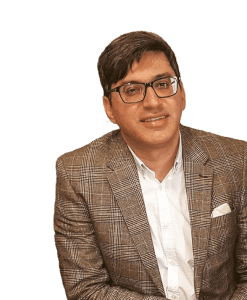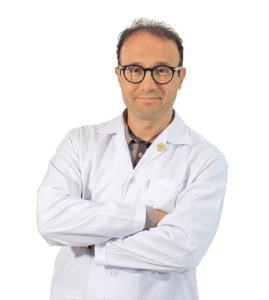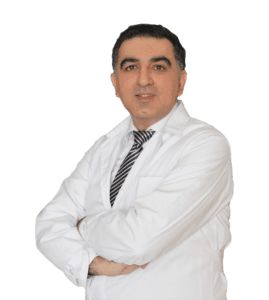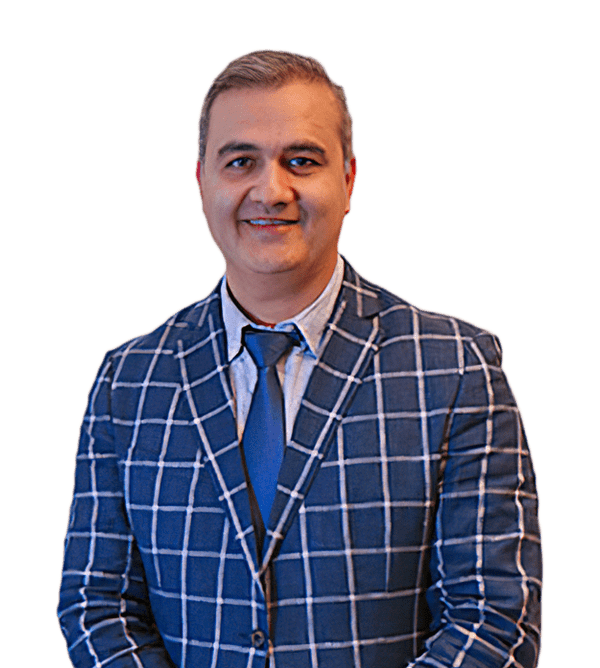Revision Rhinoplasty in Turkey: All you need to know
Revision Rhinoplasty in Turkey, or secondary rhinoplasty, is a surgical procedure to correct problems or adverse results caused by previous rhinoplasty (nose job).
Revision Rhinoplasty in Turkey can be more complicated than primary rhinoplasty, as this surgery must correct the problems caused by the previous surgery while also achieving the patient’s expectations and desired results. For this reason, the cost of a revision rhinoplasty in Turkey is usually higher than the primary rhinoplasty.
Several factors can cause patients to seek a revision nose job procedure. Some of these reasons entail dissatisfaction with the appearance of the nose after the initial surgery, respiratory problems caused by the previous surgery, functional problems such as nasal obstruction or collapse, formation of scar tissue, or other complications occurring as a direct outcome of the primary surgery.
Revision rhinoplasty in Turkey is a highly desired procedure that has gained recognition and attracted many people worldwide to undergo the revision rhinoplasty procedure. In Turkey, revision experts and proficient plastic surgeons in advanced and state-of-the-art medical facilities perform revision rhinoplasty. By choosing to undergo a revision rhinoplasty in Turkey, individuals can have the chance to attain their desired aesthetic and functional results.
Turkey presents numerous advantages for individuals contemplating cosmetic or plastic surgery, including Revision Rhinoplasty in Turkey. When evaluating revision rhinoplasty options in Turkey, it is essential to research and select a reputable and highly skilled surgeon specializing in nose job procedures, particularly revision rhinoplasty, to ensure optimal outcomes. This can be accomplished by reviewing patient testimonials and consulting with multiple surgeons. Additionally, the reputation of the medical facility or the clinic plays a crucial role in attaining the best possible results.
Avamedi offers multiple other services, such as Rhinoplasty in Iran.
Why Have Revision Rhinoplasty in Turkey?
Turkey is the top destination for undergoing various cosmetic and plastic surgeries, including Revision Rhinoplasty in Turkey, due to numerous reasons. These reasons include:
- Highly experienced and skilled rhinoplasty surgeons in Turkey are among the main factors in choosing the country as a favorable spot for having a revision rhinoplasty procedure. Turkish plastic surgeons are famous all around the world for their expertise in performing various revision rhinoplasty procedures, which have led to excellent resolution. Due to their superior skills, Turkish surgeons can understand the complexities and problems caused by previous surgery and can quickly correct them.
- Choosing Turkey is financially advantageous as the cost of revision nose job procedures in the country is more affordable than in other countries. The captivating aspect of Turkey’s offering for individuals seeking revision rhinoplasty procedures is the merger of competitive pricing and unbeatable medical care, making it a convincing choice.
- Turkey’s leading-edge facilities and advanced technological systems ensure individuals a safe and smooth procedure process.
- Another great advantage of Turkey is its cultural and tourism fascination. Turkey has a rich cultural and historical background, providing individuals with numerous opportunities to visit the country’s remarkable sites when traveling to Turkey for surgery.
- Also, Turkey’s solid medical tourism infrastructure has allowed individuals a more convenient medical journey. Online healthcare providers in Turkey can help individuals by assisting and accommodating them throughout their expedition.
For a thorough understanding and resolution of all your remaining queries regarding Turkey, do not hesitate to contact Avamedi Health Group. We offer a complimentary and customized consultation.
How Much is Revision Rhinoplasty in Turkey?
The cost of revision rhinoplasty in Turkey ranges from $3,500 to $6,000, depending on several factors such as the complexity of the procedure, the surgeon’s expertise, and the clinic’s reputation. This is significantly lower than the average cost in countries like the United States or the United Kingdom, where prices can exceed $10,000–$15,000. Many factors affect the cost of revision rhinoplasty in Turkey.
Factors Influencing Revision Rhinoplasty Prices in Turkey
- The pre-operative examinations and tests: Before having a revision rhinoplasty procedure, you should undergo several tests as your doctor ordered, which modifies the surgery’s cost.
- The cost of anesthesia: The cost of the medications used in anesthesia can affect the cost of the procedure.
- The surgeon’s expertise: Usually, surgeons with a high level of experience and knowledge receive higher salaries. The track record and the level of Surgreon’s expertise play a crucial role in the successful outcomes of the procedure and obtaining the best results.
- The reputation of the medical facility or the clinic: The quality of care and services provided in the medical facility or the clinic can influence the overall cost of the revision nose job procedure in Turkey. Medical facilities with the latest technology and professional staff may incur an increased cost.
- The level of the complexity of the procedure: Some procedures are different, and the level of complexity varies based on the extent of the needed correction or complex grafting, which can lead to higher costs.
- The geographical location: The geographical location within Turkey can also impact the cost of the revision rhinoplasty procedure. The cost of cosmetic and plastic procedures in large cities is typically higher.
- Additional costs: Other costs, such as the cost of medications, dressings, etc, are included in the total expense of the surgery.
Is It Worth Traveling to Turkey for Revision Rhinoplasty?
Absolutely! Turkey not only offers affordable prices but also access to some of the best revision rhinoplasty surgeons in the world. With cutting-edge technology and personalized care, patients can achieve outstanding results without compromising quality.
Avamedi offers multiple other services, such as Revision Rhinoplasty in Iran.
Why Do Patients Consider a Revision Rhinoplasty in Turkey?
Revision Rhinoplasty in Turkey occurs when people are unsatisfied with the results obtained from their primary surgery and the surgery did not proceed as desired, or when the immediate surgery caused problems in the person’s breathing due to the lack of correct nose correction or dissatisfaction with the aesthetic results.
An important point that should be considered in secondary rhinoplasty is that the nose is one of the essential parts of the face. With each subsequent surgery involving extensive manipulation, the likelihood of achieving an improved outcome diminishes, particularly considering that the nose occupies a prominent position at the center of the face. Furthermore, repeated surgeries risk complications and harm to the individual undergoing the procedures.
There are several reasons why people consider a Revision Rhinoplasty in Turkey, which include the following:
- When the individual is not satisfied with the overall appearance of their nose, they can consider a revision nose surgery.
- In cases where there is a slight bump on the nose, or the nostrils are asymmetrical, Revision Rhinoplasty in Turkey can be performed to restore it.
- A revision nose job can also pull respiratory disorders apart from removing appearance defects.
- Airway obstruction
- Collapsing nasal cartilage or bones
- The abnormal appearance of the nose
- Heightened nasal asymmetry
- Over-reduction or insufficient reduction of bridge height
- Incomplete nose shaping
- Overly or inadequately enlarged nasal tip
- Excessive narrowing of the nasal tip
- Forming a significant scar outside or inside the nose
Typically, individuals who experience issues with nasal breathing or have aesthetic concerns, such as nasal deviation, following their initial rhinoplasty are advised to consider undergoing a Revision Rhinoplasty in Turkey.
Without a doubt, even in minor problems where the person’s consent is not obtained, it may be necessary to consider a revision nose surgery, and the individual would need to undergo the procedure.
Success Rate of Revision Rhinoplasty in Turkey
The success rate of revision rhinoplasty in Turkey is relatively high for various reasons. Turkey is an advanced country in the field of rhinoplasty procedures. The country is focused on utilizing modern technology and relies on the surgeon’s high level of skills and capability in performing revision rhinoplasty procedures.
Many factors affect the success rate of revision rhinoplasty, including the surgeon’s knowledge and expertise, the complexity level of the procedure, and the patient’s anatomy.
For a successful result of a revision nose job procedure, it is necessary to consult with certified and reliable plastic surgeons to obtain thorough information about the procedure based on your desires, needs, and objectives.
How Long Does It Take to Recover After a Revision Rhinoplasty?
After the surgery, a bandage covers your nose. Slight swelling and bruising of the nose are expected, and you may feel stiffness or pain in your nose for up to a week. Any stitches will be removed a few days after surgery. Most patients can return to their work and routine activities after one week.
However, strenuous activities should be avoided for 2 to 3 weeks. You should avoid any activity that may hit or damage the nose for eight weeks. Most swelling subsides within two weeks, but it may take up to a year for all swelling to disappear.
The rhinoplasty surgeon generally recommends you rest for at least two weeks and avoid heavy activities during the recovery period after revision rhinoplasty. After two weeks, you can resume your normal activities. You will have your first follow-up visit within the first week after your rhinoplasty surgery. A small cast will be placed on the surgical site this week.
This cast remains on the nose in some patients until they return to work, school, or social activities. During the second week of recovery, conditions will improve, and you can start some daily activities. Wearing glasses is forbidden for four weeks after secondary rhinoplasty. If you must wear glasses, rest them on your forehead and avoid placing them on the bridge of your nose.
Usually, a person fully recovers from rhinoplasty, which takes a year. However, in some people, the revision nose surgery is more extended, and it is possible that the side effects, such as swelling, take up to two years to be removed entirely, and the final result will be determined. The expected progression of the recovery period after revision rhinoplasty is as follows:
- Immediately after the revision rhinoplasty: After being discharged and arriving home, rest as much as possible for the first few days. Expect bleeding and bruising; to reduce these effects, place your head higher than your body while sleeping. Using a cold compress on the first day helps a lot to reduce pain and swelling. Also, take painkillers according to the prescription of the specialist doctor.
- One week after the revision rhinoplasty: During the first week, it is still possible to feel pain, but it can be controlled with medication. The most challenging thing in this period is the recovery period the faculty brings. You can breathe through your mouth until this problem is resolved. During this time, you should avoid any training and sports activities; otherwise, your recovery process will be prolonged.
- Several weeks after the revision rhinoplasty: A few weeks to a month after the revision rhinoplasty procedure, you can begin to engage in light activities, but you should still not participate in high-impact sports. The scars and wounds have not entirely healed in this period, and the nose is still swollen. By keeping your body hydrated and eating healthy foods, you can speed up the recovery period of the revision rhinoplasty.
How Long Does It Take for Swelling to Go Down After Revision Rhinoplasty?
Bruising and swelling after surgery are common side effects during the recovery period. These two factors subside significantly during the first week. When the nasal splint is removed, your nose will be swollen and decline. In general, 90% of the swelling subsides during the first six weeks after the revision rhinoplasty procedure, and the remaining 10% will resolve within a year.
The skin acts as a protective layer, enveloping and showcasing the refined structure and contour of the nose, ideally revealing the aesthetically pleasing outcome of the surgery.
The thickness of the skin plays a vital role in the speed of subsidence of swelling, especially in revision nose surgery. During revision rhinoplasty, the surgeon is confronted with addressing the presence of scar tissue beneath the skin, along with the skin’s thickness. Thicker nasal skin in patients who have undergone primary rhinoplasty frequently results in an increased presence of scar and hard tissue, consequently complicating the secondary rhinoplasty procedure. This is where the skill and experience of a good rhinoplasty surgeon play a crucial role. A proficient surgeon can substantially improve by utilizing cutting-edge techniques and addressing the nose’s form and function.
Following the surgeon’s postoperative care instructions is the most critical factor in proper healing and subsidence of swelling and bruising. The surgeon will guide you on managing swelling and treating your wounds.
What is Grafting, and What Materials Are Used for Grafting in Revision Rhinoplasty?
Grafting in rhinoplasty is a technique used to correct structural defects and improve the aesthetic appearance of the nose. It involves grafting cartilage from different sources, such as the septum, ear, or ribs, to reshape and relocate nasal structures. This procedure is usually performed to correct such problems as a deviated septum, irregularity of the nasal tip, or insufficient nasal protuberance. By supplementing or replacing the existing cartilage, grafting techniques improve the nose’s aesthetics and improve breathing function. Skilled surgeons carefully select the appropriate cartilage source and use specific grafting techniques to achieve natural results that harmonize with overall facial features.
Grafts can be used in revision rhinoplasty procedures. Graft in nose surgery will strengthen the nasal tip and prevent it from dropping.
Fleshy noses usually have weaker cartilages, and the nasal tip is droopy. Graft can be used to lift the nasal tip and fix or reduce the width of the nasal tip. At the same time, noses that are saddle-shaped due to injury, illness, or previous surgeries can be corrected with the help of a graft. In noses that are crooked and twisted, grafting will be very effective in restoring the nose’s appearance.
Various sources of cartilage graft are used in revision rhinoplasty in Turkey, each with unique advantages and considerations. The most common types are:
- Autograft: In autograft, cartilage is harvested from the patient’s body, usually from the septum, ear, or rib. This method ensures compliance and minimizes the risk of rejection or infection.
- Allograft: Allograft involves donor cartilage, usually obtained from a tissue bank. Although allografts eliminate the need for an additional surgical procedure to harvest cartilage, rejection or minor infection is possible.
- Synthetic implants: Synthetic materials such as silicone or Medpore can be used as cartilage substitutes. These materials are non-biological and do not need to be harvested from the patient’s body. However, they may bear a higher risk of complications and long-term problems.
Best Revision Rhinoplasty in Turkey
Over the years, Turkey has earned a name for itself in the field of international medical tourism, especially for cosmetic and reconstructive surgeries, which include revision rhinoplasty. With high standards of care combined with expert surgeons, it offers this unique blend of affordability, quality, and convenience. If one is considering revision rhinoplasty, then Turkey is an excellent choice for achieving transformative results.
Turkey is also in the limelight of the most advanced healthcare infrastructures with experienced surgeons and reasonable treatments. Here’s why most international patients opt for revision rhinoplasty in Turkey:
- Affordable Costs: Turkey is much more affordable as compared to Western countries to get a revision rhinoplasty, so it’ll be the first choice destination for those who want affordable quality treatment.
- World-Class Surgeons: Surgeons in Turkey are among the best surgeons in the world because of their competency and innovative surgical techniques in the most complex surgeries, which include revision rhinoplasty.
- Comprehensive Care: Many clinics in Turkey have packages inclusive of consultations, surgery, aftercare, and even accommodation.
For those seeking the best revision rhinoplasty in Turkey, it offers an unbeatable combination of quality, expertise, and affordability. With world-class clinics and highly skilled surgeons, it’s no surprise that Turkey is a top destination for this transformative procedure.
Best Rhinoplasty Surgeon in Turkey
Selecting the most suitable rhinoplasty surgeon in Turkey relies on the individual’s specific needs, preferences, and unique factors to consider. Nevertheless, Turkey boasts numerous exceptional surgeons renowned in the field of rhinoplasty, including:
- Huseyin Kandulu is widely recognized as one of Turkey’s most renowned and highly regarded rhinoplasty surgeons. He specializes in plastic and cosmetic procedures and operates with expertise and skill in distinctive clinics. Dr. Kandulu is widely acknowledged as an exceptional surgeon in this field and is highly desired by those seeking his services.
- Şerif Yavuz: Best known as a prominent plastic and cosmetic surgeon in Turkey, Dr. Yavuz delivers exceptional care to his patients at his highly regarded clinic. Regarded as one of Turkey’s top and renowned medical professionals, he holds extensive expertise and has achieved a remarkable reputation in this domain.
- Salih Onur BASAT is a preeminent and highly accomplished surgeon in Istanbul, specializing in facial cosmetic surgeries and rhinoplasty. He provides singular medical services at the eminent Plast Clinic located in Istanbul. Dr. Salih Onur BASAT has boundless nose surgery experience and has achieved remarkable success throughout his career.
Conclusion
In conclusion, revision rhinoplasty in Turkey is a sought-after procedure for individuals unsatisfied with their primary nose surgery results. It is a complex surgery that requires knowledgeable surgeons to address the problems caused by the initial surgery while meeting the patient’s expectations. Turkey offers several benefits for revision rhinoplasty, including highly experienced surgeons best known for their expertise in the field. The procedure cost in Turkey is more cost-effective than in other countries. Turkey’s advanced facilities, modern technological systems, and robust medical tourism infrastructure ensure a safe and comfortable patient experience.
The success rate of revision rhinoplasty in Turkey is relatively high, thanks to the utilization of advanced technology and the expertise of surgeons. Typically, the recovery period after a revision nose job lasts a few weeks to a year, during which patients should follow postoperative instructions and avoid strenuous activities. Swelling after revision rhinoplasty typically subsides remarkably within the first week, with 90% of the swelling resolving within the first six weeks. The remaining 10% of swelling can take up to a year to entirely go down. The thickness of the skin and the presence of scar tissue can impact the speed of swelling subsidence, making the experience of a skilled surgeon necessary to achieve successful outcomes.
Following postoperative care instructions provided by the surgeon is vital for proper healing and reducing swelling and bruising. Grafting techniques using cartilage from sources such as the septum, ear, or ribs are frequently employed in revision rhinoplasty to correct structural defects and enhance the aesthetic appearance of the nose. Turkey is home to several notable rhinoplasty surgeons who are highly respected for their proficiency and outstanding outcomes. If you wish to improve your understanding and explore revision rhinoplasty in Turkey, Avamedi is available as your mentor, offering customized guidance.
Source 1: ASPS
Source 2: NIH
Updated and Reviewed by Hesam.M (Dec 25th, 2024)
















